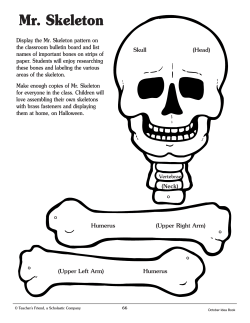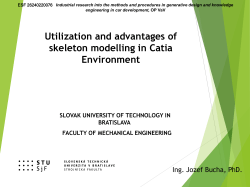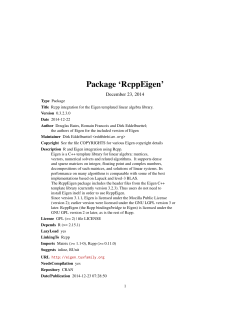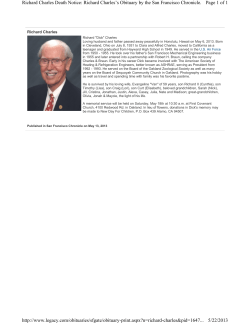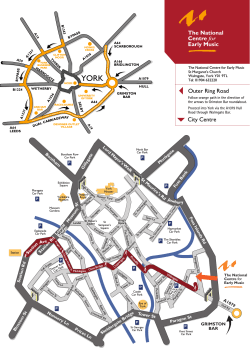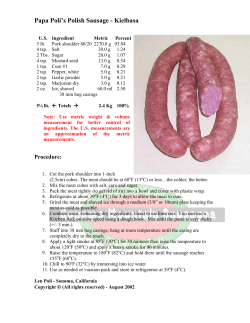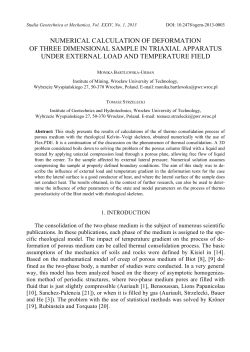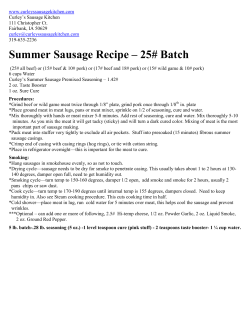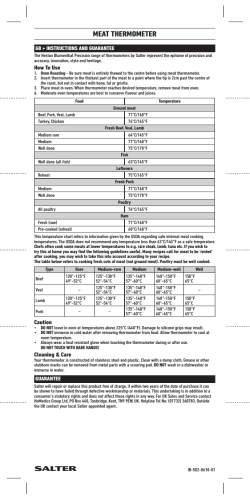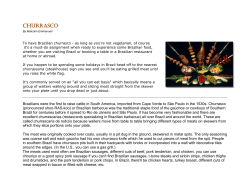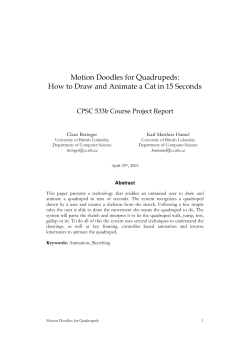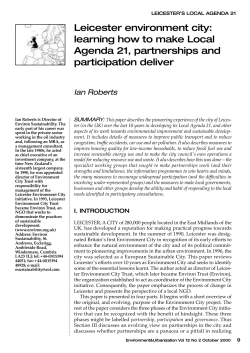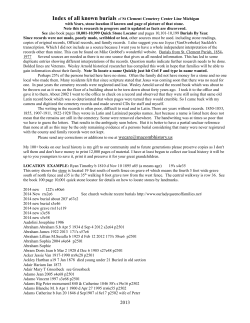
How to identify a skeleton The Search for King Richard III Educational Resource
The Search for King Richard III Educational Resource How to identify a skeleton In 2012, when archaeologists were searching for the remains of King Richard III, they found a skeleton inside the Greyfriars church. They called it Skeleton 1, but who was it? During the excavation, the archaeologists collected evidence about where the person was buried in the church and how the person was treated after they died. When Skeleton 1 was taken back to the lab, the archaeologists could tell a lot about the person from their bones: They could determine if the person was male or female by studying the pelvis, base of the skull, the forehead and the jaw. o Men usually have a more prominent brow ridge and jaw. o Women have a wider pelvis. They used formulas to determine the person’s height based on the length of the leg and arm bones. By studying the mineral content in the bones they could tell what sort of diet the person had. o Different levels of carbon in the bone show whether they ate mostly fish or meat. o Different levels of nitrogen in the bone show whether they ate mostly meat or vegetables. They were able to approximate how old the person was when they died by examining the joints, bones and teeth. By radiocarbon dating the bones, they could work out when the person died. o All living organisms take in an isotope of carbon called Carbon 14 until they die, then the amount of Carbon14 in the tissue begins to decrease over time. Scientists are able to count the amount of Carbon14 left in the skeleton and work out how long ago this happened – the more found, the younger the sample. By looking for signs of disease and trauma on the bones, they could tell how the person died. Putting all the evidence together, the archaeologists were able to work out who Skeleton 1 was. Look at the archaeological evidence and the evidence on the skeleton. What does the evidence tell you about Skeleton 1? Can you work out which person is the most likely match for the evidence? © University of Leicester 2013 The Search for King Richard III Educational Resource Skeleton 1: Meet some of the people buried in the church I am Brother William Giles. I am the last warden of the friary. We built our church in the year 1230 and we buried people in it for over 300 years until King Henry VIII demolished it in 1538. We buried important people at the eastern end of the church; you can meet some of them below. I am Master Peter Swynfield. I am an important friar, in charge of all the Franciscan friars in England. I am Ellen Lavener. I am not rich, but I gave the poor friars some land in Leicester so they could build a bigger friary. I am Sir William Moton. I am a local knight. I gave the friars a lot of money to pray for me after I died. We even buried King Richard III. He was the last Plantagenet king of England and was killed at the Battle of Bosworth in 1485. © University of Leicester 2013 The Search for King Richard III Educational Resource By piecing together the evidence, archaeologists could tell in which part of the church Skeleton 1 was buried. Can you? Archaeologists can tell a lot about how a person was treated after they were dead from the way the body was buried? What does the evidence suggest to you? The grave is too short for the person in it. The head is propped up. Skeleton 1 The grave appears to be messily dug. The skeleton is twisted in the grave. There is no evidence for a coffin or shroud. The hands may be tied together. © University of Leicester 2013 The feet are missing because a cellar had been dug through them after this person was buried. The Search for King Richard III Educational Resource Skelton 1: The skeletal evidence Radiocarbon dating the bone tells us that this person died between 1450 and 1540. Both arms are normal. There is no evidence for a withered arm. This person suffered from Scoliosis. This caused the spine to curve sideways. They were not hunchbacked. The curved spine meant that the right shoulder may have been higher than the left shoulder. By measuring one of the leg bones we can work out that this person would have been 5ft 8in tall (1.72m) tall. The teeth tell us that this person was between 27 and 37 years of age. The pelvis shows that this person is male. The skull has been sliced many times by a sharp weapon. This suggests that the person died in battle. The feet are missing. Both legs are the same. There is no evidence for a limp. The bones are very slender. This person would have been slim. © University of Leicester 2013 Analysis of the minerals in the bone tells us that this person ate a lot of fish and meat. This person appeared to be healthy. There is no evidence of disease. The Search for King Richard III Educational Resource Problem One: Who is Skeleton 1? 1 Brother Peter Swynfeld Brother Peter was male He was 5ft 6in tall He ate a lot of fish and meat He died in 1272 He was aged 72 when he died He died of old age He was buried in the presbytery Supporting evidence? Yes No Yes No Yes No Yes No Yes No Yes No Yes No 2 Ellen Lavener Ellen was female She was 5ft 3in tall She did not eat a lot of fish or meat She died in 1349 She was aged 37 when she died She died of the plague She was buried in the choir Supporting evidence? Yes No Yes No Yes No Yes No Yes No Yes No Yes No 3 Sir William Moton Sir William was male He was 5ft 7in tall He did not eat a lot of fish but ate a lot of meat He died in 1362 He was aged 60 when he died He died from a fall which fractured his skull He was buried in the presbytery Supporting evidence? Yes No Yes No Yes No Yes No Yes No Yes No Yes No 4 King Richard III Richard III was male He was 5ft 8in tall He ate a lot of fish and meat He died in 1485 He was aged 32 when he died He died in battle He was buried in the choir Supporting evidence? Yes No Yes No Yes No Yes No Yes No Yes No Yes No 5 Brother William Giles Brother William was male He was 5ft 8in tall He ate a lot of fish but not a lot of meat He died in 1538 He was aged 35 when he died We do not know how he died He was not buried in the friary Supporting evidence? Yes No Yes No Yes No Yes No Yes No Yes No Yes No Who is Skeleton 1? © University of Leicester 2013 The Search for King Richard III Educational Resource Problem Two: Who is right? Since I died, people have written many things about me; what I looked like and what I did during my life. Now that my skeleton has been found, can you tell if they were right or wrong? Or does the archaeological evidence not answer the question? Historic Fact I was born at Fotheringhay in Northamptonshire I had slender arms and legs. My right shoulder was higher than my left. I was buried in the choir of the Greyfriars church. I was hunchbacked. My left shoulder was higher than my right. I murdered my nephews, the Princes in the Tower. My body was dug up when the church was demolished in 1538. My body was thrown in the river in 1538. I was buried hastily. I was an evil tyrant. I had a withered arm. I had a limp. I was killed in battle in 1485. © University of Leicester 2013 True False Not Sure
© Copyright 2025
